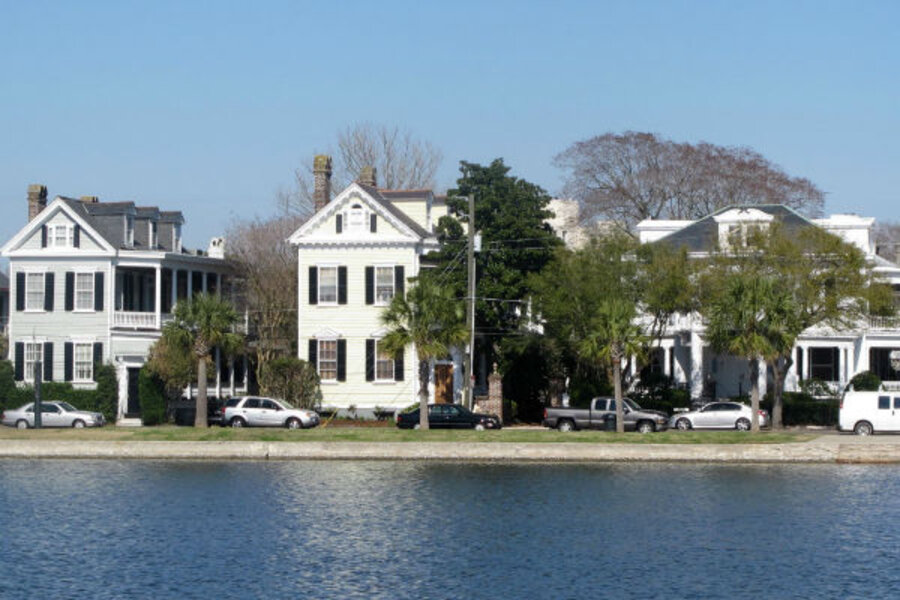Flood zone insurance: a reprieve but, likely, not for long
Loading...
Homeowners buckling under skyrocketing flood insurance rates received a brief reprieve Friday, as President Obama pulled back 2012 reforms to the National Flood Insurance Program.
For many years, federal flood insurance, now $24 billion in debt, had been criticized as subsidizing dangerous building and rebuilding in flood zones. The 2012 reforms aimed to bring costs in line with revenues and ask owners to pay the real cost of the risk they're taking.
But Congress got an earful after cuts in federal subsidies resulted in skyrocketing premiums for home and business owners living in flood plains. Some property owners saw increases of 10- and 15-fold.
Friday’s rollback will bring rates for the bankrupt program back down to pre-reform levels, but only temporarily.
"While Congress was able to make the glide path a little more gentle ... they still did nothing, zero, to really address the affordability issues," Chad Berginnis, executive director of the Association of State Floodplain Managers told the Associated Press.
More than 1 million policyholders can expect to see their rates creep back up in the coming decade. Rates are expected to increase 18 percent annually for residential properties and 25 percent annually for vacation properties.
The number of homes and businesses that fall within a flood plain could drastically increase by 2015 if the Federal Emergency Management Agency adopts new flood zone maps that reflect projected sea level rise, The Boston Globe reported.
While rate increases will impact the largest number of people in coastal communities, homes and businesses around the nation’s rivers and lakes will also see rising premiums.
The National Flood Insurance Program dates back to the 1960s and covers homes and businesses in flood zones that were built before there were building codes mitigating flood risks. Over the years, government subsidies for these properties, coupled with a series of catastrophic flood events, have resulted in a $24 billion government shortfall. The 2012 reforms aimed to stem the tide of red ink for taxpayers and shift more of the burden of paying for flood damage back onto those who live in flood zones.
Bridging that gap, even gradually, is a burden many property owners hit by such higher rates say is too great to bear.
“The problem is the insurance payments will become so onerous that no one can afford to pay them,” Robert Gurley, director of advocacy for the Preservation Society of Charleston, S.C., told the Associated Press.
In Maine, some residents are opting to drop their insurance policies and bear the risk of floods themselves.
For property owners unwilling or unable to take the risk on themselves, few options remain. Realtors across the country have reported increased difficulties in selling homes in flood plains because buyers are unwilling to take on the higher premiums.
Lurie and Michael Portanova of Jersey Shore, Pa., told AP that flood insurance rates for their block of 19th century brick shops had soared from less than $3,000 to more than $25,000 following the 2012 reform. While Friday’s rollback offers temporary relief, the Portanovas expect those rates to climb back up above $25,000 in the coming decade.
“There’s no way we can afford that. Just no way,” Mr. Portanova told AP. “We’d have to let it go back to the bank and walk away from it.”
Scientists and policy analysts have long pushed for revision of flood insurance subsidies, which they say has promoted development in locations frequently battered by storm surges, the Monitor reported in September.
Material from Associated Press was used in this report.






